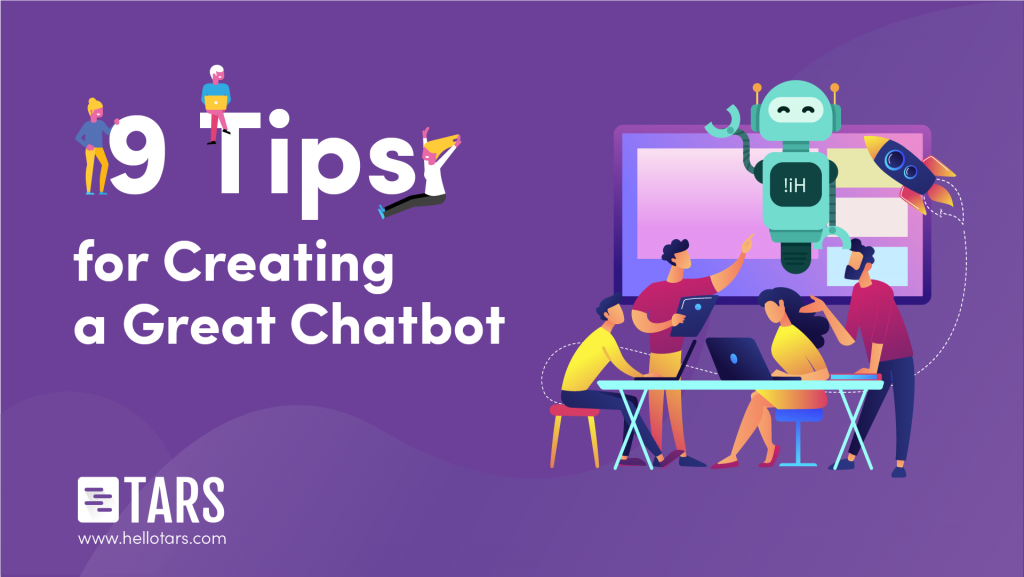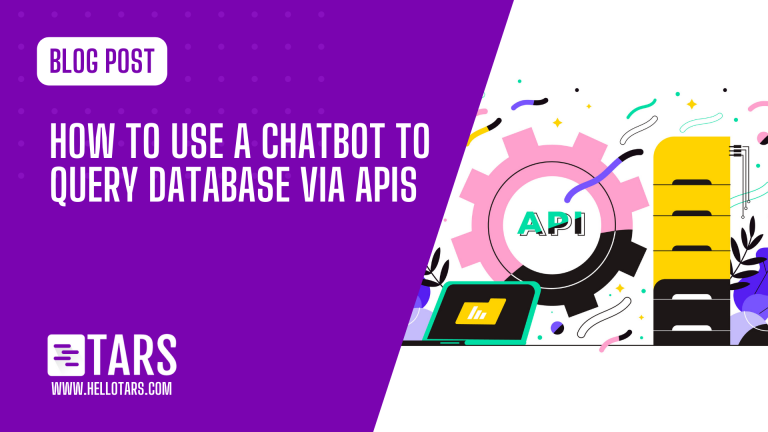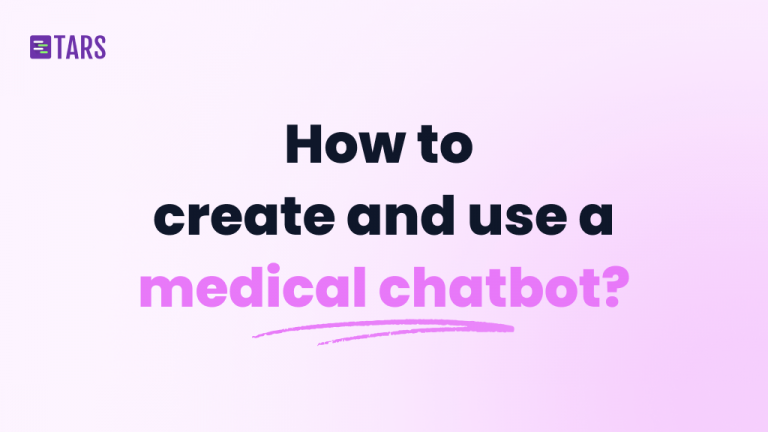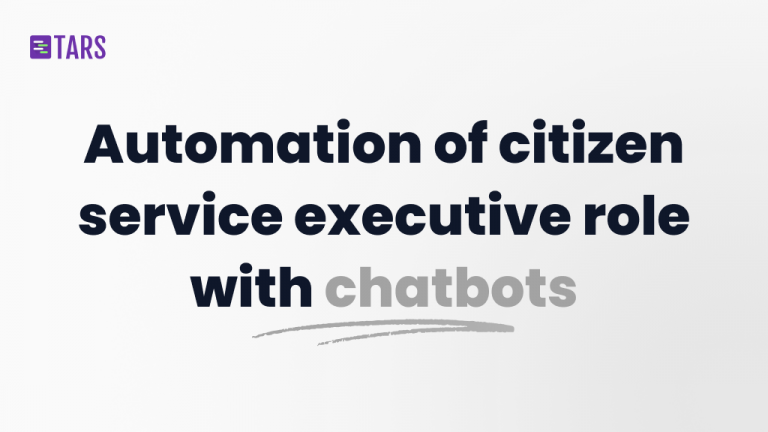9 Best Practices for Creating A Great Chatbot

Just a few years ago chatbots were more of an interesting idea and in many cases a cool tool to play with.
Not anymore.
Chatbots are quickly gaining their market share and with over 40% of millennials saying that they engage with chatbots on the daily basis, not only are chatbots here to stay but they can expect strong growth.
In times when customer experience is becoming the priority, and the growth of many websites is faster than the potential capacity of their customer service representatives – chatbots are an obvious solution.
There are also less obvious ones. You can create welcome chatbots, card abandonment chatbots, product assistant chatbots, and much much more.
In this post, we will go over some of the main tips that will make your chatbot an unstoppable machine for conversions!
Let’s get into it!
1. Define What Your Chatbot’s Job Will Be Before You Start Building
Your chatbot needs to have a very well-defined job to get you results. To be able to properly define its job, you’ll need to ask yourself “What problem do I need the chatbot to solve?”
The possibilities are endless. Your chatbot could help move people through your sales funnel, improve conversion rates, answer queries. So, before you let the chatbot take over the job you need it to, your job is to define its role and purpose.
You can start by making a list of potential tasks the chatbot could handle. Then, as you start tweaking the list, define the chatbot’s role in your company or your digital marketing strategy and start building from there.
Don’t skip this step because your chatbot will be difficult to implement and prove useless if it doesn’t serve a clear purpose.
Once you know what it will do, you can start thinking about what you want your chatbot to look like. Choose its size, design, functionalities, and personality. All these characteristics and features need to go hand in hand with the chatbot’s job. Then, figure out what the conversational flow should be. Things like what the chatbot needs to know and how it will deliver information. From here, you can develop its tone of voice and also set its limits.
Limits are very important. Knowing what job the chatbot will serve dictates how the chatbot greets and how far they take a conversation with a user. This tip will help you build your chatbot to ask the right questions and avoid steering the user in any wrong direction.
2. Focus on Data
This tip for creating a great chatbot is all about the data. It’s paramount that you figure out what kind of data you need to feed your chatbot and what data the chatbot will aim to get from users. If the chatbot’s main job is to collect data, you will need to build it to ask the right questions for this purpose. Again, you must define your goals from the get-go.
Data is a key element in making the chatbot deliver results for your business. It can help you improve conversions, personalize marketing strategies, improve marketing attribution, and streamline your customers’ journey.
Each conversation the chatbot has with a user is filled with useful information. This information-gathering needs to be nurtured through the right chatbot scripts.
Your chatbot needs to only gather data that is relevant to your goals. For instance, it could get user location data. Or, their email address. Your chatbot’s questions need to be tailored to your data needs. Open-ended questions or chatbots that are too conversational won’t get you very far. You need to create a chatbot script that will lead the user to the desired outcome without any effort and be a clear addition
3. Use a Chatbot Building Platform
A chatbot-building platform can help you get all the chatbot benefits without having to become a tech mastermind. Most of them are drag and drop and include great customizing features to get your chatbot just right for your business. You can use them to answer customer queries on your website, Facebook, or Instagram. Or, to offer deals to potential customers and take orders or bookings.
Tars, for instance, is a fantastic chatbot-building platform that offers great functionality. The chatbots you create with Tars can be easily integrated on your brand’s website, social media, and even Whatsapp. They offer plenty of templates either by industry or by use category. For example, you could try a support chatbot template for an insurance company. Or, a transaction chatbot template for a healthcare company. They have tons of options and hundreds of templates available.
With Tars, you can also download and analyze the data collected by your chatbot. This is a great feature that allows you to get more out of your chatbot’s data-gathering efforts.
When you will be creating your chatbot, keep in mind possible connections to other marketing automation platforms that you might be using. Chatbots can generate notable amounts of very important customer data that you can leverage in your future promotion campaigns.
4. Start Small and Work Your Way Up
Especially if you are looking to get fast results, it may be tempting to overload your chatbot with features. However, you should refrain from that. Completely! Otherwise, you may end up overcomplicating the script. As mentioned in the first tip for creating a great chatbot, your number one goal should be to set clear goals.
You want your chatbot to specialize in one task. That’s how you’ll get the most out of it. Your chatbot needs to be focused on one main mission and its workflow needs to be adapted to your objectives. Once you get a hang of things, you can start adding new features and developing your chatbot. We’ll have more on this below.
For the beginning, keep things simple and focus on making your chatbot easy to understand and concise. These are the most important aspects you need to nail at first. Then, once you get a feel of your audience’s reaction to the chatbot, you can learn from their behavior and enhance your chatbot’s functionality with whatever features fit your goals.
5. Minimize User Effort
The best tip for creating a great chatbot is by far setting it up to minimize user effort. Using language users can easily understand and adding hints and visual clues are the best ways to increase chatbot engagement. Also, put a lot of thought into your script matching your goals and the information you are trying to collect. Add only the options and questions that will help you achieve your objectives.
From the get-go, you want your chatbot to be clear about what it can do for the user and how. Try a quick hello followed by a brief explanation of the chatbot’s role and how the user can interact with it. Another popular chatbot feature you can add is quick-answer buttons. You can use them to provide users with several suggested answers to the chatbot’s questions.
Make sure you limit the number of suggestions, though. Add too many and they will defeat the purpose. This is a good tip to guide users through the conversation with the chatbot and limit its scope. This way you avoid situations where the conversation doesn’t go anywhere, and makes the user frustrated.
Another great tip is to avoid asking more than one question at a time. If you want your chatbot to be easy to understand and get clear answers, you’ll need to ask questions one at a time. You should also have your chatbot validate the information it receives from the user. It can do so by repeating the answer back and getting confirmation from the user that it understood what they want.
6. Teach Your Chatbot the Right Language
Creating a great chatbot is all about finding the right language to address the user and reach your objectives. How well your chatbot performs is determined by how well you nail the conversational tone and flow.
Keeping your chatbot goals in mind, create short and uncomplicated sentences and questions. Avoid open-ended questions, as well as asking more than one question at a time. The key is to keep the conversation as natural as possible. And to not overcomplicate the chatbot’s script. Your chatbot should feel humanlike and the conversation should feel personal.
If the chatbot runs into any issues or errors, it’s best to handle these situations with humor. Plus, make sure you offer the user quick alternatives. For instance, if it wasn’t able to understand the user’s question it can say “Oops..” and “Would you like to be transferred to a customer service representative?”
More complex chatbots can even pick up on the user’s tone and follow along. They can have sets of replies for the same question and deliver the answer that best fits a scenario. They can also pick up how the user types and mimic their pattern.
Everything you do needs to focus on avoiding having any frustrated or angry customers. Other things you should steer clear of are gender-specific pronouns, repeating the same question too many times, asking questions that serve no purpose, and using complicated sentence structures.
Your chatbot’s language needs to stay consistent throughout. And it needs to match your brand’s image. If you made it fun, then fun it should go with. Throw in gifs, emojis, and slang. Go wild! However, if it’s formal, let it stay that way throughout the conversation. Users like to know what they can expect. So, keep things steady and balanced. Don’t have your chatbot do anything a human wouldn’t do in a normal conversation.
7. Give Your Chatbot a Personality
Your chatbot should connect with users at a human level. It needs to be scripted to follow a natural conversation flow and show empathy.
The best tip for creating a human chatbot is to add some personality to it. This personality should be based on two things. One is your brand voice, your brand’s personality. The second is your target audience’s persona.
If you are not familiar with your audience’s preferred tone of voice, invest in researching this before you set up your chatbot. See if you can identify how they prefer to be addressed, how formal or casual they tend to be in conversations, identify any phrases that might appeal to them. Add all the information you can to equip your chatbot with the personality your audience would like best.
To get answers, you can go to social media. See how your audience communicates and play on that. If they tend to be casual, make sure your chatbot is too. Add gifs and emojis into the conversation. And don’t use overcomplicated or fancy phrases. If your audience is the professional, formal type, create a chatbot that is somber. But, not excessively. You still want to give users a feeling they are talking to a person, not a robot.
You can also take things one step further. If you are feeling bold, you can set your bot up to become a character. Give it a fun name, an avatar, and a fun persona that people can grow to like and identify even outside the chatroom. This can help you connect with your audience on an emotional level and help make your brand more personable.
8. Optimize Your Chatbot Regularly
Be ready for your chatbot to make mistakes. However, don’t go thinking that that means your chatbot failed. Chatbot errors are actually good. It’s how you can bridge the gap between what you thought your audience wants from your chatbot and what they really do. Getting and analyzing this data is what can help you develop a chatbot that can satisfy users’ needs and help you achieve your goals.
Any errors your chatbot makes are a chance to adapt the conversation script and improve UX. You need to be open to learning from those errors and use them to build a better chatbot.
As mentioned, the best way to start is small. Create a simple chatbot without a lot of functions and release it into the world. As users start using it, you will start to understand what works and what doesn’t.
Maybe the chatbot isn’t asking the questions right or the right questions. Maybe instead of solving user issues, it creates frustration. Trust that chatbot implementation is a process. And learning as you go is the most important part of that process.
As soon as you get the information you need on how user experience matches your expectations (and theirs), you can adapt the chatbot script and functions to deliver better results. Analyzing user data is how you can determine what new features to develop and how to fine-tune the language you use when addressing your audience.
9. Check Out the Competition’s Chatbots
Another good way to improve your chatbot is to peek over the fence. No need to be shy. Everyone does it!
While copying their strategy is something you want to avoid, seeing your competition’s approach to chatbot communication is a good way to evaluate your own strategy. You could end up concluding that your chatbot is way better. You could find that your competition had better ideas. Or that they are using better technology than you. No matter what you find, it will be a useful lesson that can help you grow.
Conclusion
So there you have it. These tips should make sure that even your first chatbot draft will be a great improvement to your customer service and conversion rates.
One additional tip that should go without saying, but we will still repeat it – analyze your data. When you will finally finish your chatbot, you will have a tendency to set and forget.
Sure, chatbots are there to make your life easier but it is important to constantly tweak them. It is much easier to improve your conversion from 1% to 1.25% than to increase your inbound traffic by 25% isn’t it?
Keep this in mind when you are thinking if that chatbot of yours needs another upgrade or not.
Vlad Falin is a founder and blogger at Cost Of Income where he writes about digital marketing online business and helps thousands of monthly readers to achieve their online goals.
- 1. Define What Your Chatbot’s Job Will Be Before You Start Building
- 2. Focus on Data
- 3. Use a Chatbot Building Platform
- 4. Start Small and Work Your Way Up
- 5. Minimize User Effort
- 6. Teach Your Chatbot the Right Language
- 7. Give Your Chatbot a Personality
- 8. Optimize Your Chatbot Regularly
- 9. Check Out the Competition’s Chatbots
- Conclusion


Build innovative AI Agents that deliver results
Get started for freeRecommended Reading: Check Out Our Favorite Blog Posts!

How to Use a Chatbot to Query Database via APIs

How to create and use a medical chatbot for medical diagnosis, symptom checking and more: detailed guide

Automation of citizen service executive role and responsibilities with chatbots

Our journey in a few numbers
With Tars you can build Conversational AI Agents that truly understand your needs and create intelligent conversations.
years in the conversational AI space
global brands have worked with us
customer conversations automated
countries with deployed AI Agents



